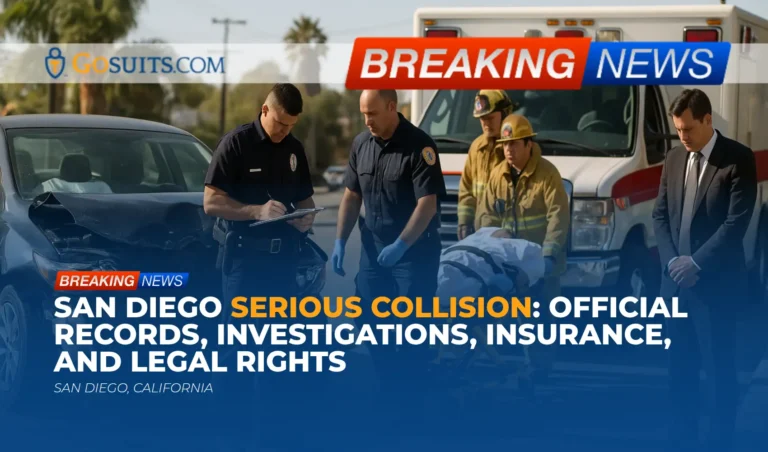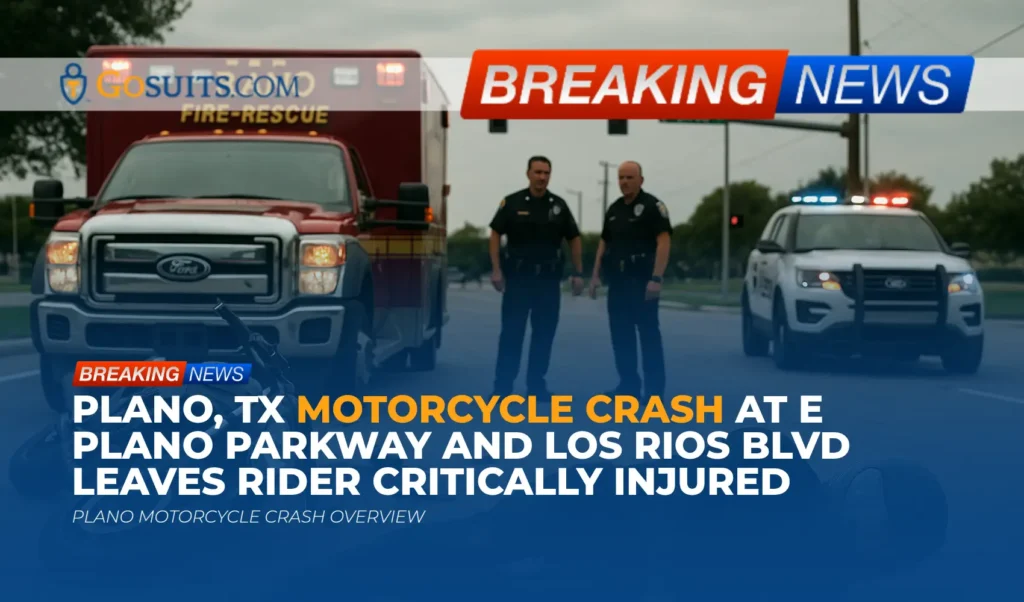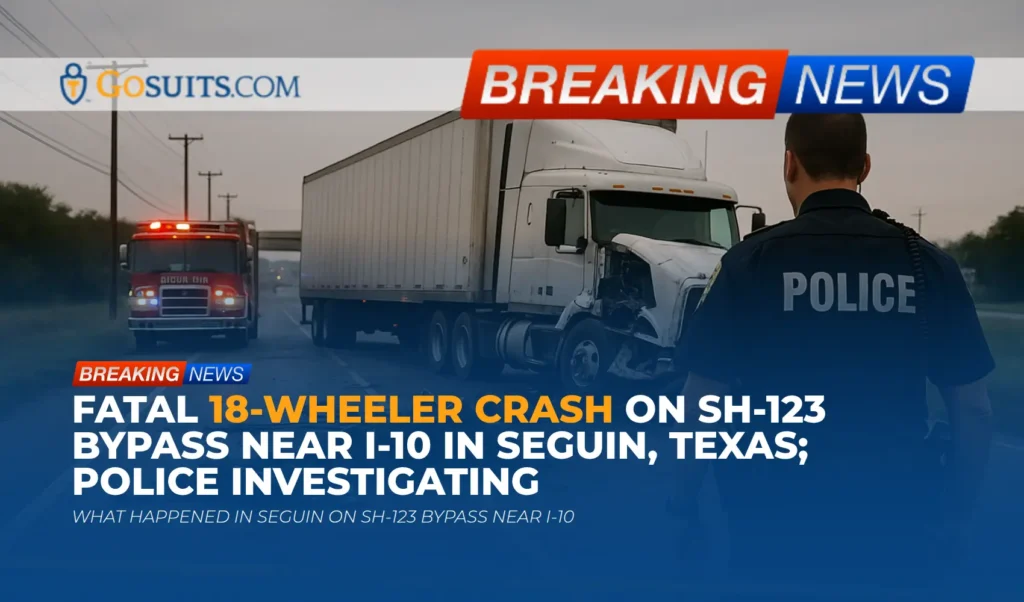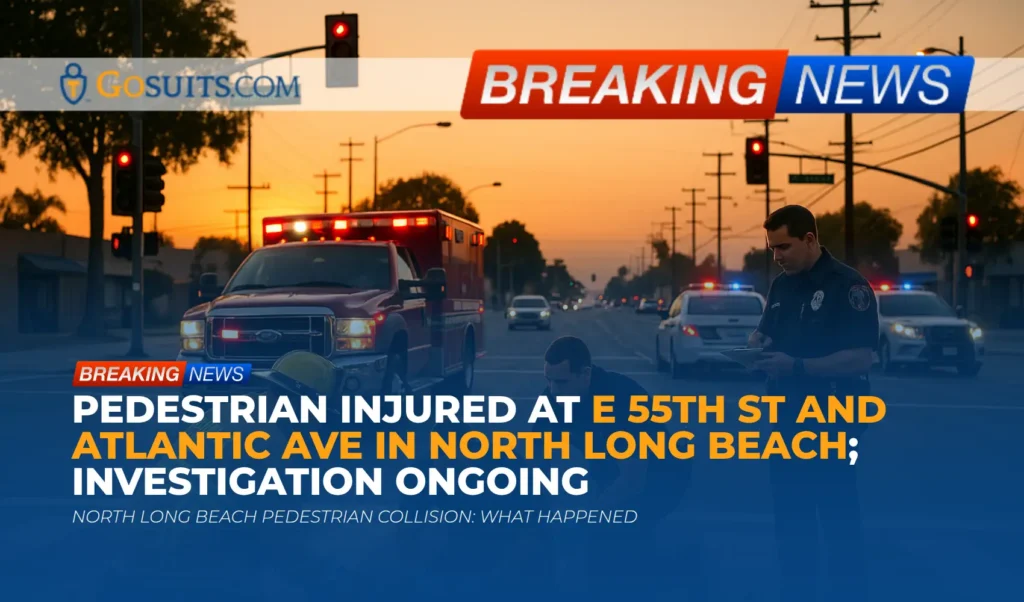- What Is Known From the Linked Media and Why Official Records Matter
- Immediate Health and Safety Priorities After a Serious Collision
- How Traffic Fatality and Serious Injury Investigations Work in San Diego
- Where and How to Obtain Official Records in San Diego County
- Key Civil Law Considerations After a Crash in California
- Insurance and Financial Considerations
- Preserving Evidence and Building a Civil Claim
- Safety and Data Resources Relevant to San Diego Roadways
- Practical Support and Public Programs
- Why Timely Action Matters
- Commentary from Gosuits San Diego, California Personal Injury Attorney
What Is Known From the Linked Media and Why Official Records Matter
The link provided points to a general NBC San Diego media page featuring videos. Because the media page does not describe a specific incident, it does not supply confirmed information about the date, time, location, vehicles, agencies present, or injuries. When news coverage is limited or developing, it is normal for details to be incomplete. In these moments, families and community members often rely on official agencies to clarify what happened.
In San Diego, serious roadway incidents may be investigated by the San Diego Police Department Traffic Division within city limits or the California Highway Patrol on freeways and certain state routes. The San Diego County Medical Examiner typically handles investigations involving fatalities. Each agency creates records that can help families understand the facts and begin addressing next steps. The sections below explain how those processes generally work and where to find official information.
Immediate Health and Safety Priorities After a Serious Collision
Even when details are scarce, the first priorities after a serious crash are safety, medical care, and clear communication with authorities. Guidance from national and state safety agencies emphasizes calling 911, securing medical evaluation, and ensuring the scene is safe if it can be done without risk. While everyone’s circumstances are unique, the following general steps are widely recognized:
- Call 911 and request medical help. Emergency dispatch can coordinate law enforcement, fire, and EMS response. If a crash occurs on a state highway or freeway, dispatch may notify the California Highway Patrol. Within city streets, local law enforcement such as the San Diego Police Department typically responds.
- Accept medical evaluation. Some serious injuries are not immediately obvious. Emergency medical providers are trained to identify hidden trauma.
- Cooperate with first responders. Provide factual information to officers and medics. If uncertain about an answer, it is okay to say you are unsure.
- Document what is safe to document. If it can be done without interfering or risking harm, photos of vehicle positions, debris, road conditions, and weather can later help investigators.
- Avoid social media statements. Public posts can be misinterpreted and may later be used out of context by insurance companies.
For general safety guidance and data about collisions, the National Highway Traffic Safety Administration maintains public resources for roadway safety education on nhtsa.gov.
How Traffic Fatality and Serious Injury Investigations Work in San Diego
A serious crash investigation aims to determine how and why a collision occurred. Although specific procedures vary by agency and circumstances, the following overview reflects standard practices in San Diego County:
Which agency investigates
- San Diego Police Department (SDPD). Generally handles investigations on city streets within San Diego. Information about police records is available at the City of San Diego’s public page for the Police Department at sandiego.gov/police/services/records.
- California Highway Patrol (CHP). Typically leads on freeways and state routes. Collision report requests and instructions are available at chp.ca.gov/notify-chp/collision-report-request.
- San Diego County Medical Examiner (ME). For fatalities, the ME determines cause and manner of death and manages next-of-kin notifications, autopsy, and official reports. See sandiegocounty.gov/content/sdc/me.html.
What investigators typically collect
- Scene measurements and diagrams. Skid distances, vehicle rest positions, lane markings, and roadway geometry.
- Vehicle inspections. Exterior damage, restraint use indicators, event data recorder downloads when available, and mechanical condition.
- Digital evidence. Potential traffic camera footage, nearby business or residential surveillance, and photographs.
- Witness statements. Contact information and factual accounts from those who saw the event.
- Toxicology and autopsy results in fatal cases, generated by the Medical Examiner.
How long reports take and who can get them
Timelines vary. A preliminary police incident number is created soon after a response. Formal collision reports can take days to weeks, and supplemental reports may be added as evidence is processed. Fatality cases may take longer because investigators coordinate with the Medical Examiner for final determinations. Generally, involved parties, their legal representatives, and in some instances next-of-kin may request copies of reports. Agencies provide specific instructions for eligibility and identification.
Where and How to Obtain Official Records in San Diego County
Accessing official records helps families and injured individuals understand what happened, manage insurance claims, and plan for practical needs. The following agencies provide the most relevant documents. When making requests, provide any case number, incident date, location, and names of involved parties if known.
Police collision reports
- San Diego Police Department Records Unit. The City of San Diego provides information on requesting police reports and related records at sandiego.gov/police/services/records. Availability depends on case status and eligibility rules.
- California Highway Patrol collision reports. For freeways and state routes or where CHP is the primary agency, see chp.ca.gov/notify-chp/collision-report-request. CHP explains the use of form CHP 190, identification requirements, and proof of involvement.
Medical Examiner and autopsy documents
- San Diego County Medical Examiner. Families can find information about case status, autopsy, and requesting reports at sandiegocounty.gov/content/sdc/me.html. The Medical Examiner’s Office provides guidance for next-of-kin, including how to request the investigative report, autopsy report, and toxicology findings when available.
Death certificates
- San Diego County Assessor/Recorder/County Clerk. Certified copies of death certificates can be ordered through the County. See the county’s Assessor/Recorder/County Clerk main page at sandiegocounty.gov/content/sdc/arcc.html for how to request certified vital records.
Traffic operations and roadway information
- Caltrans QuickMap. For state-managed roads, current traffic conditions and lane closures can be viewed at quickmap.dot.ca.gov. For background on Caltrans operations and safety programs, see dot.ca.gov.
Victim compensation and assistance
- California Victim Compensation Board. Certain crime-related losses may be eligible for support through the state program at victims.ca.gov. Eligibility criteria and covered expenses are listed on the official site.
Key Civil Law Considerations After a Crash in California
The civil legal landscape after a traffic collision can be complex. The points below are general information relevant to California cases. Specific rights and options depend on the facts and the agencies involved.
Fault and responsibility
- Negligence and comparative fault. California follows comparative fault principles, which means each party’s share of responsibility can affect damages proportionally. Investigations look at speeding, distraction, impairment, right-of-way, roadway design, and other factors.
- Employer liability. If a driver was working at the time, the employer may bear responsibility under respondeat superior. This can affect insurance coverage layers and policy limits.
- Public entity liability. Claims alleging a dangerous condition of public property have special notice requirements and tight deadlines. Different procedures apply depending on whether the roadway is city, county, or state controlled.

Wrongful death and survival actions
- Wrongful death claims. Certain family members may bring claims seeking damages such as loss of financial support and companionship. The California Courts Self-Help site provides general guidance at selfhelp.courts.ca.gov/wrongful-death.
- Survival actions. The decedent’s estate may seek damages the person would have recovered had they survived, subject to statutory rules.
Time limits and public entity claims
- General time limits. California law imposes strict filing deadlines for civil actions. The California Courts Self-Help website provides a broad overview of personal injury timelines at selfhelp.courts.ca.gov/personal-injury. The exact deadline depends on case type and parties involved.
- Public entity notices. Claims alleging wrongdoing by a city, county, or state agency generally require a written claim within a short period, often six months from the incident, before a lawsuit can be pursued. For state-level claims, the Department of General Services provides information at dgs.ca.gov/orim.
- Local risk management claims. For incidents involving city infrastructure, the City of San Diego Risk Management division outlines claim procedures at sandiego.gov/riskmanagement.
Because deadlines can differ and exceptions may apply, many families choose to have an attorney evaluate potential timelines early, especially if a public entity might be involved.
Insurance and Financial Considerations
Insurance policies and claims procedures can significantly affect recovery after a collision. A cautious, informed approach helps protect the interests of those impacted.
Auto insurance layers commonly at issue
- Liability coverage. Pays for losses caused by a negligent driver, up to policy limits.
- Uninsured and underinsured motorist coverage. May apply if the at-fault driver lacks sufficient limits. The policy language controls whether and how it applies.
- Medical payments coverage. Sometimes available to help with initial medical expenses regardless of fault, depending on the policy.
- Employer or commercial policies. If a vehicle was used for work, business policies may provide additional layers of coverage.
Recorded statements and early settlements
- Caution with insurer communications. Statements to insurance representatives can be used later. If a claim is being considered, it is prudent to consult an attorney before giving recorded statements.
- Do not rely solely on early settlement offers. Early offers may not account for future medical needs or the full impact on a family.
DMV reporting
- Accident report to DMV. California generally requires drivers to report a traffic collision to the DMV within a set time when specified thresholds are met. The DMV’s page on the SR-1 report is at dmv.ca.gov/portal/vehicle-registration/insurance-requirements/file-an-sr-1-report.
If someone intends to pursue an insurance claim, it is often advisable to contact an attorney first for a free consultation to understand rights and responsibilities. What is said to an insurance company can be used later, and sometimes statements are interpreted in ways that reduce claim value.
Preserving Evidence and Building a Civil Claim
Evidence can fade quickly. Vehicles are moved, debris is cleared, and digital footage can be overwritten. Preserving the right evidence early can make a significant difference in understanding what occurred.
Vehicle and electronic data
- Event data recorders. Many vehicles store limited crash-related information. The National Highway Traffic Safety Administration discusses event data recorders at nhtsa.gov/equipment/event-data-recorder. Prompt notice to preserve vehicles and their electronic data can be important.
- Dashcams and telematics. Personal dashcams, fleet telematics, and rideshare or delivery platforms may hold relevant evidence. Timely requests increase the chance it will be retained.
- Commercial carriers. For trucks and buses, records of driver hours, vehicle inspections, maintenance, and GPS may exist. The Federal Motor Carrier Safety Administration provides safety and data resources at fmcsa.dot.gov.
Scene evidence and witnesses
- Third-party video. Nearby businesses and residences sometimes have security cameras that overwrite footage quickly. Early outreach can help preserve copies.
- Physical evidence. Tire marks, gouges, and debris fields change as traffic resumes. Photos and measurements collected by investigators are often crucial.
- Witness information. Identifying and contacting witnesses while memories are fresh helps ensure a clearer factual record.
Spoliation and preservation letters
Attorneys often send preservation notices to individuals, companies, and agencies to request that relevant evidence not be altered or destroyed. This can include vehicle data, driver logs, maintenance records, and camera footage. Because different entities have different retention policies, early requests are wise.
Safety and Data Resources Relevant to San Diego Roadways
Public data helps communities understand risk and prioritize prevention. While each collision is unique, trends can shed light on common factors that lead to severe injuries or fatalities.
- California Office of Traffic Safety. The OTS provides statewide and local collision trends, including alcohol involvement, speed, and pedestrian or bicyclist injuries. See ots.ca.gov for reports and grants aimed at improving roadway safety.
- National Highway Traffic Safety Administration. NHTSA publishes research and national-level statistics, along with safety campaigns on impairment, speeding, seat belts, and pedestrian safety at nhtsa.gov.
- City of San Diego Vision Zero. The city’s effort to eliminate traffic deaths and serious injuries includes engineering, enforcement, and education initiatives, available at sandiego.gov/vision-zero.
If a collision appears to involve infrastructure factors, lighting, signage, sightlines, or road surface conditions, official records and engineering evaluations may be relevant to assigning responsibility and planning safety improvements.

Practical Support and Public Programs
Serious collisions create legal, financial, and emotional burdens. The programs below provide general support information. Eligibility varies and may depend on the circumstances.
- Victim compensation. The California Victim Compensation Board may assist with certain expenses when a qualifying crime is involved. Information and applications are at victims.ca.gov.
- Medical Examiner family resources. The San Diego County Medical Examiner provides guidance and support resources for next-of-kin, including how to request reports and the steps in their process at sandiegocounty.gov/content/sdc/me.html.
- Death certificates. The County’s Assessor/Recorder/County Clerk outlines how to obtain certified copies at sandiegocounty.gov/content/sdc/arcc.html.
Many families also coordinate with employers, schools, and community organizations to address immediate needs such as leave from work, counseling, and transportation.
Why Timely Action Matters
In the aftermath of a serious crash, time affects evidence, benefits, and legal rights. Taking organized steps can preserve options and reduce uncertainty.
- Secure official records promptly. Police reports, Medical Examiner documents, and, when applicable, CHP collision reports provide the foundation for understanding what happened. Obtaining them early helps align medical decisions, insurance notifications, and financial planning.
- Preserve physical and digital evidence. Vehicles can be salvaged or repaired, and cameras overwrite quickly. Early preservation requests increase the likelihood that crucial evidence is not lost.
- Track deadlines. California civil claims and insurance policies impose specific timelines. Claims involving public entities often require a written notice within a short period. Missing a deadline can significantly limit options.
- Clarify insurance coverage layers. Identifying all applicable policies takes time, especially if commercial or employer coverage may apply. Early review can prevent gaps.
- Coordinate care and documentation. Medical treatment plans, diagnostic testing, and rehabilitation records document the full impact of injuries and inform any future claims.
- Consider early legal consultation. An initial consultation can help identify potential parties, evidence needs, and pitfalls to avoid when dealing with insurance adjusters who may seek statements.
The benefit of acting promptly is clarity. Timely records and preserved evidence often lead to a more accurate reconstruction of events, a better understanding of rights, and fewer surprises later in the process.
Commentary from Gosuits San Diego, California Personal Injury Attorney
Our hearts are with anyone affected by serious roadway incidents in the San Diego community. This article is intended for educational purposes and general information. Because the media link did not include specific details about the particular event, the thoughts below focus on how these cases commonly unfold and what issues often matter most to families.
From a civil perspective, traffic collisions turn on careful fact finding. Responsibility can involve an individual driver, a commercial carrier, or, in some cases, a public entity if roadway conditions contributed. Independent documentation and official records help everyone take the guesswork out of difficult decisions. When an investigation is thorough, it better reflects the lived reality of those impacted, rather than relying on assumptions or incomplete narratives.
Insurance companies and large organizations navigate these situations every day. Adjusters are trained to gather statements quickly, limit exposure, and resolve claims at the lowest possible cost. People dealing with sudden loss or injury may not realize that a recorded statement can be dissected later, or that an early offer could leave out future medical needs, wage loss, or the broader impact on a family. Knowledge gaps are often where rights are diminished, not because a claim lacks merit, but because the process favors repeat players who understand the rules and timelines.
A free consultation with a seasoned injury attorney can level the information playing field. It can help identify all potentially responsible parties and insurance policies, clarify the role of the Medical Examiner and law enforcement reports, and prioritize preservation of evidence such as vehicle data or surveillance footage. It can also provide guidance on how to approach insurance communications so that no one unknowingly compromises their position. While no discussion can change what happened, understanding the civil process can reduce uncertainty and help chart a path forward with care and dignity.






